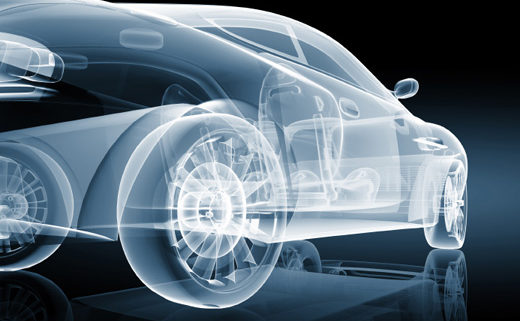Drive to light-weight vehicles binds automotive and chemical industries in plastics collaboration
As global vehicle manufacturers navigate the challenge of balancing the need to comply with environmental regulation with rising energy costs and the rocketing demand for vehicles in emerging economies, one material is becoming increasingly important: plastics. Fibre-reinforced plastic composites offer a 25%-35% weight reduction compared to equivalent steel parts of the same strength. And of course, lighter cars mean greater fuel efficiency and lower emissions.
The automotive and chemical industries are therefore collaborating to develop optimal plastics and polymer-based components – with the knowledge that regulators are stepping up their focus on recyclability as well as emissions. AT Kearney notes that collaboration will be fundamental to catalysing breakthrough innovations, from the design stage to investigating new production and assembly processes, such joining plastics and metals. Importantly, collaboration will be needed throughout the complex automotive-plastics value chain, including the creating of a downstream recycling industry.
This is a trend that was already recognised in 2010 by market intelligence site ICIS. In 2013, leading chemical company BASF won an Altair Enlighten Award – an award specifically recognising vehicle light-weighting achievements – for its development of a thermoplastic composite front seat pan.
The average vehicle weight has dropped by 20%, according to research by AT Kearney, which translates into a similar reduction in per-vehicle emissions. European analysts predict that by 2020, the average vehicle weight will shrink to a little more than a tonne – its 1970 level – after peaking at nearly 1.5 tonnes in 2010.
Interestingly, electric power trains result in heavier cars, accounting for 20% of a vehicle’s total weight, whereas standard combustion engines account for 12% of vehicle weight, says AT Kearney. The firm also expects that within the next decade, plastics will account for 18% of the average vehicle’s weight, up from 14% in 2000.
In addition to light weighting, using the right plastics can also help to achieve improved resistance, stiffness and aesthetics (through greater versatility in design) and reduce noise, vibration and harshness.
As chemical companies compete to fulfil the needs of automakers, they will face challenges in the shape of more competition from steel, oil price volatility, product shortages and recyclability. This is where talking to MBA Polymers can help – we can advise chemical companies and carmakers on the optimum grades of plastic to use in terms of recyclability – and naturally we can offer carmakers the option to source high quality recycled plastic too.
Some manufacturers may consider using bioplastics, although the difficulty here is that there’s currently no standard process to recycle bioplastics effectively and they can otherwise take a long time to degrade, just like standard PET.
Here’s our Quality Control Manager, Peter Mackrell, explaining why automotive shredder residue (ASR) makes a high quality source material. The ASR we receive through our joint venture partnership with EMR is comprised of 75% plastics (and 25% wood, rubber, foam and trace quantities of metal). The majority of these plastics are polypropylene, which is a strong material used for car bumpers. We also receive ABS and polystyrene – these plastics have typically been used in high end applications in the interior of the car. All these high quality materials can be recycled to deliver excellent performance in their next life.
Ultimately, high quality plastics will be increasingly important to the automotive industry. We’re keen to play a role in the expansion of a high quality plastics recycling industry at a global level – and we need policymakers and manufacturers worldwide to join us in making this a reality.


